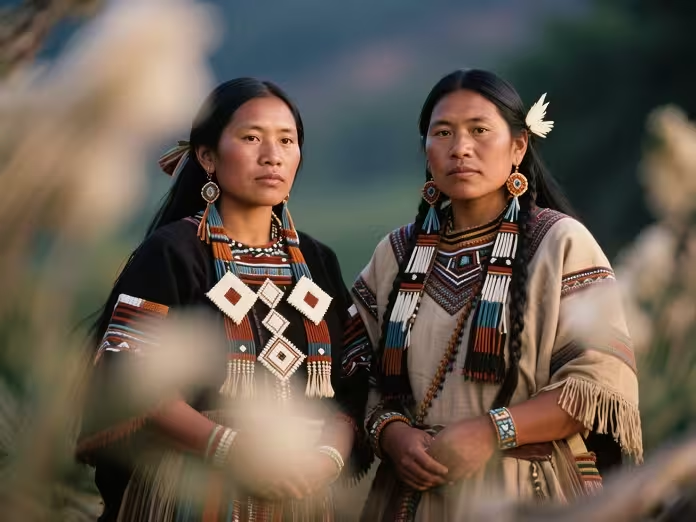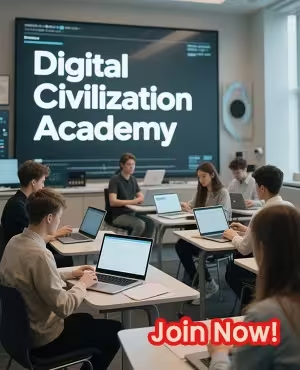
The race against time to preserve indigenous knowledge has found an unlikely ally: cutting-edge digital technology. What was once passed down through oral traditions and hands-on apprenticeships is now being captured, cataloged, and protected through innovative digital preservation methods that are revolutionizing how we safeguard humanity’s oldest wisdom.
In remote villages across the globe, elderly storytellers carry centuries of accumulated wisdom in their minds—knowledge about medicinal plants that could cure diseases, sustainable farming techniques that work with nature, and cultural practices that have sustained communities for millennia. Yet with each passing day, this irreplaceable heritage faces extinction as younger generations migrate to cities and traditional knowledge holders pass away without successors.
Ancient Wisdom Dies Every 14 Days—Until Now
The Critical State of Indigenous Knowledge Loss
Indigenous communities worldwide possess an estimated 80% of the planet’s biodiversity knowledge, yet UNESCO warns that one indigenous language—and the knowledge it carries—disappears every two weeks. This represents more than just linguistic diversity; it’s the loss of sophisticated understanding systems developed over thousands of years.
Consider the Inuit people’s nuanced vocabulary for different types of ice and snow conditions—knowledge that proves invaluable for climate research. Or the complex agroforestry systems of indigenous Amazonian communities that maintain soil fertility while preserving forest ecosystems. When these knowledge systems vanish, humanity loses proven solutions to contemporary challenges ranging from sustainable agriculture to climate adaptation.
The problem intensifies as globalization accelerates cultural homogenization. Young people often view traditional knowledge as outdated, preferring modern alternatives without recognizing the tested wisdom embedded in ancestral practices. Meanwhile, climate change and environmental degradation threaten the very ecosystems that indigenous knowledge systems were designed to understand and manage.
Digital Tools Transforming Knowledge Preservation
Modern technology offers unprecedented opportunities for preserving indigenous knowledge systems in comprehensive, accessible formats. Digital archives can capture not just spoken words but entire cultural contexts through multimedia documentation that preserves the richness of traditional practices.
- Interactive Digital Libraries Advanced digital platforms now allow communities to create comprehensive repositories of their knowledge systems. These platforms support multiple languages, include audio and video documentation, and enable community members to add contextual information that outsiders might miss. The Digital Library Federation’s Indigenous Digital Archive project exemplifies this approach, providing culturally appropriate frameworks for knowledge organization.
- Augmented Reality Documentation AR technology enables immersive documentation of traditional practices. Imagine pointing a smartphone at a medicinal plant and accessing centuries of indigenous knowledge about its properties, preparation methods, and traditional uses. Several pilot projects in Australia and Canada are already using AR to overlay traditional ecological knowledge onto modern landscapes.
- Blockchain for Knowledge Protection Innovative blockchain applications are addressing intellectual property concerns that have historically limited indigenous knowledge sharing. These systems can track knowledge attribution, ensure community consent for access, and even enable communities to maintain control over how their knowledge is used commercially.
Successful Digital Preservation Initiatives
The Maori people of New Zealand have pioneered digital knowledge preservation through their “Living Heritage” project, which combines traditional storytelling with virtual reality experiences. Visitors can virtually participate in traditional ceremonies while learning about cultural protocols and meanings—preserving both explicit knowledge and cultural context.
In the Amazon, the Digital Indigenous Stories project works with multiple tribes to document traditional ecological knowledge about rainforest management. Using smartphone apps, community members record observations about seasonal changes, animal behavior, and plant properties, creating dynamic databases that evolve with environmental changes.
The Smithsonian’s Center for Folklife and Cultural Heritage has developed collaborative platforms where indigenous communities maintain direct control over their digital archives while making selected knowledge available for educational and research purposes. This approach ensures cultural sensitivity while maximizing knowledge accessibility.
How AI Saves 1000-Year-Old Secrets From Vanishing
Overcoming Digital Divide Challenges
Successfully preserving indigenous knowledge requires addressing significant technological barriers. Many indigenous communities lack reliable internet access, modern devices, or technical training necessary for digital archiving projects.
Community-based solutions are proving most effective. Training programs that teach technical skills to community members ensure local ownership of preservation efforts while building capacity for ongoing maintenance. Solar-powered mobile units bring technology directly to remote communities, enabling on-site documentation without requiring people to travel to urban centers.
Partnerships between indigenous communities and technology organizations are creating culturally appropriate tools. For example, the First Voices project developed by First Peoples’ Cultural Council creates user-friendly interfaces that respect indigenous protocols while providing powerful documentation capabilities.
Ensuring Cultural Sensitivity in Digital Preservation
Preserving indigenous knowledge digitally isn’t simply about transferring information from analog to digital formats. It requires deep understanding of cultural protocols, sacred versus public knowledge distinctions, and community decision-making processes.
Many indigenous communities maintain complex systems governing who can access different types of knowledge. Digital preservation systems must incorporate these protocols through sophisticated access controls that respect traditional hierarchies and restrictions. Some knowledge may be appropriate for general sharing, while other information should remain accessible only to specific community members or ceremonial contexts.
Collaborative design processes ensure that technology serves community needs rather than imposing external frameworks. When indigenous communities participate in designing their digital preservation systems, the results better reflect their values and knowledge organization systems.
Future Possibilities and Innovations
Emerging technologies promise even more sophisticated approaches to indigenous knowledge preservation. Artificial intelligence could help identify patterns in traditional ecological knowledge that inform climate adaptation strategies. Machine learning algorithms might discover previously unknown connections between traditional practices and their environmental contexts.
Virtual reality platforms could enable immersive cultural education experiences, allowing people worldwide to understand indigenous worldviews through experiential learning. Imagine exploring traditional hunting grounds through VR while learning about sustainable resource management practices developed over centuries.
Advanced translation technologies could break down language barriers while preserving linguistic nuances that carry important cultural meanings. Neural networks trained on indigenous languages might help revitalize endangered languages by providing interactive learning platforms for younger generations.
Conclusion: Bridging Ancient Wisdom and Modern Technology
Preserving indigenous knowledge through digital tools represents more than cultural conservation—it’s about maintaining humanity’s diverse approaches to understanding and interacting with the natural world. As we face global challenges requiring innovative solutions, indigenous knowledge systems offer time-tested alternatives that could inform sustainable development strategies.
The key lies in ensuring that technology serves indigenous communities rather than exploiting them. When digital preservation efforts are community-controlled, culturally sensitive, and designed to strengthen rather than replace traditional knowledge transmission, they become powerful tools for cultural continuity.
The digital revolution offers unprecedented opportunities to ensure that ancient wisdom survives and thrives in the modern world, but only if we approach this work with the respect, collaboration, and cultural understanding that indigenous knowledge systems deserve.
Digital Tools Racing to Save Dying Indigenous Wisdom

































